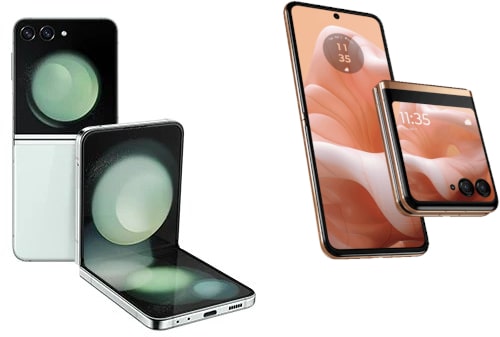Today, we find ourselves in the fascinating realm of foldable smartphones, where innovation and design transcend the conventional. Our contenders for this head-to-head showdown are the Samsung Galaxy Z Flip 5 and the Moto Razer Plus, also recognized as the Razer 40 Ultra in markets beyond the United States. As we embark on this comparative journey, we’ll scrutinize every aspect, from design nuances to performance disparities, to help you make an informed decision.

Design: Aesthetics and Build
The pivotal element of these flip-style folding phones is the introduction of expansive cover displays, departing from the traditional narrow LCD strip. Both Samsung and Moto have embraced this evolution, giving users a more immersive experience even when the phone is in a folded state.
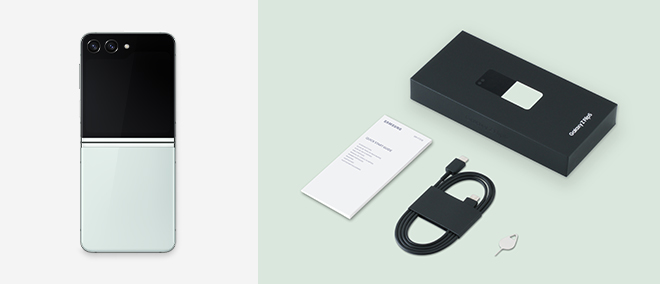
- Similarities:
- Size and Weight: Both contenders share a remarkably similar footprint, ensuring uniformity in their physical dimensions.
- Design Concept: The fundamental design approach is consistent, epitomizing the essence of a flip-style folding phone.
- Processor: Under the hood, they house Qualcomm Snapdragon processors, albeit from different generations.
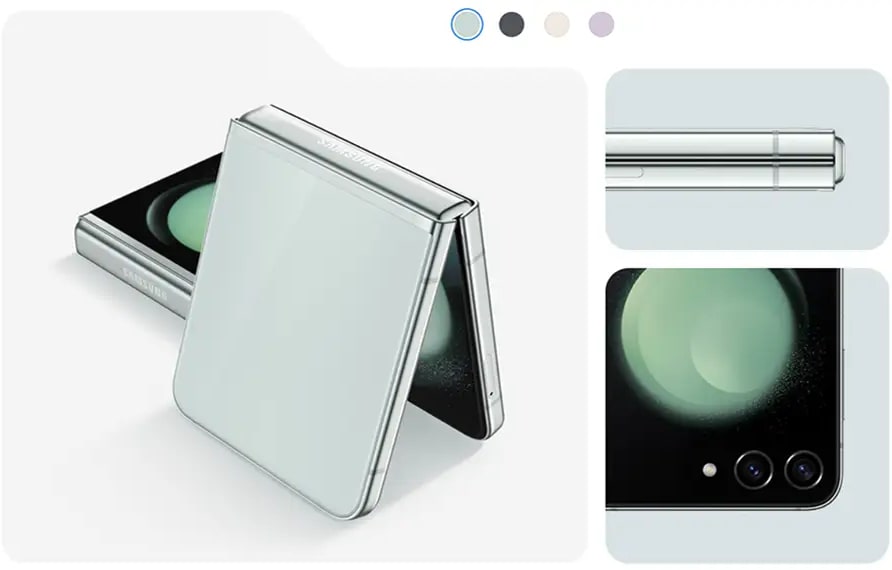
- Distinct Features:
- Display Innovation: The cover displays on both phones are a departure from the ordinary, showcasing a seamless integration that extends across the entire cover. This marks a significant advancement in the foldable smartphone arena.
- Pricing Parity: Priced at $999, both phones target the premium market segment. However, potential buyers can explore trade-in options and carrier deals to enhance the value proposition.
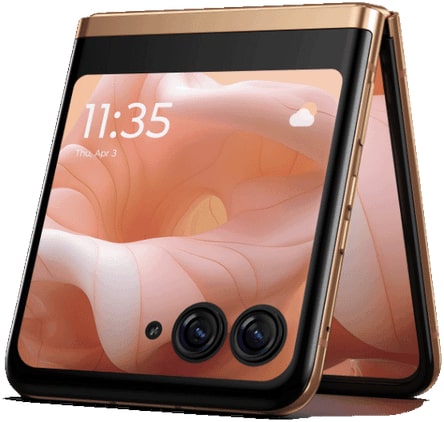
- Design Aesthetics:
- Samsung’s Spectrum of Colors: Samsung offers a diverse palette of colors for those who order directly, providing a spectrum beyond what’s available in conventional stores.
- Moto’s Vibrant Palette: Moto introduces vibrant colors, such as the eye-catching magenta E1, which exudes a T-Mobile-esque vibrancy. The frosted glass or vegan leather options contribute to a distinct look.

- Build Materials:
- Samsung’s Glass Elegance: Staying true to their design language, Samsung opts for glass, delivering a sleek and elegant aesthetic.
- Moto’s Contemporary Finish: Moto embraces frosted glass for a section of the back, and for those leaning towards the magenta variant, vegan leather is an intriguing option. The curved sides offer a comfortable grip and an ergonomic feel.

- Frames and Finish:
- Samsung’s Straight-Sided Elegance: Samsung adheres to straight sides, a characteristic feature that defines its aesthetic appeal. The aluminum frame adds durability and a premium touch.
- Moto’s Curved Comfort: Moto takes a slightly different approach with curved sides, enhancing the phone’s comfort in hand. The frosted glass, coupled with the curvature, results in a more tactile and grippy feel.

In essence, the design debate boils down to personal preferences. Samsung stays true to its glass elegance, while Moto introduces a more contemporary feel with curved edges and vibrant color options. The decision, ultimately, hinges on the user’s aesthetic inclinations and tactile preferences.
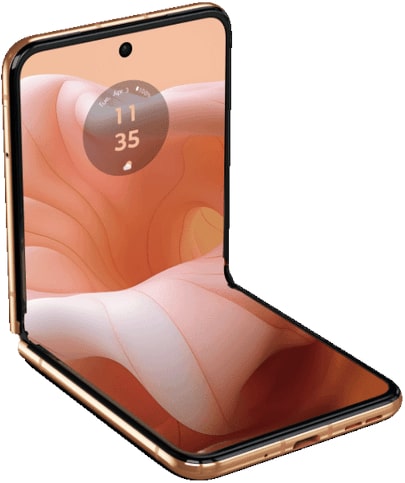
Display Quality and Innovation
- Visual Prowess:
- Both phones incorporate AMOLED or OLED displays, a standard feature among high-end smartphones. The technology ensures vibrant colors, deep contrasts, and an overall captivating visual experience.

- Immersive Cover Displays:
- The standout feature in this generation of flip-style phones is the extension of the display across the entire cover. This innovation signifies a paradigm shift in how users interact with their phones even in a folded state.
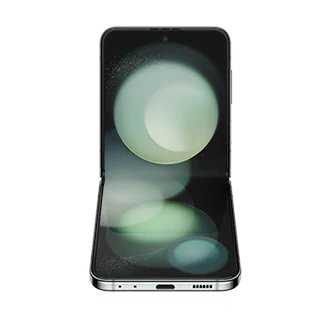
- Refresh Rates:
- Both Samsung and Moto offer an impressive 120Hz refresh rate, contributing to smoother on-screen interactions. While the absence of LTPO technology means a fixed refresh rate, 120Hz is generally well-received among users.

Performance Dynamics: Processing Power and Camera Capabilities
- Under the Hood:
- Qualcomm Snapdragon processors power both phones, yet the models differ in generations. This distinction might have implications for performance, energy efficiency, and processing capabilities.

- Price Point Paradox:
- Despite variations in processor generations, the phones are positioned at the same $999 price point. Buyers must weigh the trade-offs and advantages associated with each processor iteration.
- Camera Configurations:
- Dual rear main cameras, comprising a primary and an ultra-wide lens, adorn both the Galaxy Z Flip 5 and the Moto Razer Plus. While camera setups are not the primary focus of these phones, they offer versatility for photography enthusiasts.

Additional Features and User Experience
- Biometric Authentication:
- Both phones integrate modern biometric authentication methods, including in-display fingerprint scanners and facial recognition. These features enhance security and convenience for users.

- Connectivity and Wireless Standards:
- Robust wireless connectivity is ensured with Wi-Fi 6E and Bluetooth 5.3. The inclusion of these advanced standards aligns with contemporary expectations.
- Samsung DeX vs. Moto Enhancements:
- Samsung’s DeX mode transforms the user experience, offering a desktop-like environment. Moto introduces its own set of enhancements, contributing to a personalized user interface.
Pros and Cons: A Summation of Attributes
Samsung Galaxy Z Flip 5:
Pros:
- Glass elegance and color variety.
- Straight-sided design for a premium look.
- Established AMOLED display quality.
- Integration of Samsung DeX mode.
- Recognizable brand and ecosystem.
Cons:
- Potential fragility with glass construction.
- Straight-sided design may be less ergonomic.
Moto Razer Plus (Razer 40 Ultra):
Pros:
- Vibrant color options, including magenta E1.
- Curved edges for improved ergonomics.
- Innovative use of frosted glass and vegan leather.
- Potential grip enhancement with curved design.
- Contemporary design approach.
Cons:
- Limited color variety from the manufacturer.
- The adoption of frosted glass may not appeal to all users.
Conclusion: The Verdict on Flip-Style Elegance
The Samsung Galaxy Z Flip 5 and the Moto Razer Plus are trailblazers in the realm of foldable smartphones, each embodying a unique approach to design, innovation, and user experience. Choosing between them entails a meticulous consideration of personal preferences, whether it be the glass elegance of Samsung or the contemporary vibrancy of Moto.
Samsung’s legacy in the smartphone domain is evident in the Galaxy Z Flip 5’s refined design, rich color variety, and the seamless integration of DeX mode. However, potential users must weigh the fragility associated with glass construction and whether the straight-sided design aligns with their ergonomic preferences.
On the other side, the Moto Razer Plus exudes a contemporary charm with its vibrant color palette, curved edges, and the use of frosted glass or vegan leather. The potential ergonomic advantages of the curved design and the allure of unique color options may sway users toward the Moto camp.
In essence, this Smackdown of folding Android phones transcends a mere clash of specifications; it’s a battle of design philosophies. Both contenders cater to a discerning audience seeking not just cutting-edge technology, but an aesthetic that resonates with their individual style. Whether it’s the timeless glass elegance of Samsung or the modern vibrancy of Moto, the future of foldable phones is undeniably exciting, offering users a glimpse into the next frontier of mobile innovation.
Unveiling the Outer Display Showdown: Moto Razer Plus vs. Samsung Galaxy Z Flip 5
Diving into the realm of foldable smartphones, the Moto Razer Plus and the Samsung Galaxy Z Flip 5 emerge as contenders vying for supremacy. A pivotal battleground in this face-off is the outer display, where factors like resolution, size, and innovation come into play. As we embark on this exploration, it’s important to note that the software aspect is a distinct category, but for now, our focus zeroes in on the outer displays.
Outer Display Face-Off: Moto’s Triumph in Resolution and Size
Resolution Rumble:
In the resolution arena, the Moto Razer Plus outshines its counterpart, the Samsung Galaxy Z Flip 5. The Moto flaunts a higher resolution, boasting approximately 1,000 by 1,000 pixels compared to the Samsung’s 748 by 748 pixels. This disparity translates into sharper visuals and a more refined viewing experience on the Moto. Additionally, Moto’s contemporary aesthetic extends to how the display accommodates the cameras – an innovative cutout design that users can control with a toggle. This feature allows users to choose whether the display engulfs the cameras or maintains a distinct space, providing a level of customization that the Samsung lacks.
Size Matters:
Size becomes a significant factor in this showdown, with Moto once again taking the lead. The outer display on the Moto is not only higher in resolution but also slightly larger, measuring 3.6 inches compared to the Samsung’s 3.4 inches. While the difference may seem modest, it contributes to a more expansive and engaging visual interface. The combination of higher resolution and a marginally larger size positions Moto as the winner in the outer display size category.
Refreshing Innovations:
Moto continues its winning streak by incorporating a higher refresh rate for the outer display. While the Moto Razer Plus embraces a more dynamic and responsive 60Hz refresh rate, the Samsung Galaxy Z Flip 5 remains static, lacking the versatility of variable refresh rates. This innovation not only caters to smoother interactions but also has potential implications for battery life, a factor we will delve into shortly.
Always On Advantage:
When it comes to cover screen power consumption, Samsung introduces the “Always On Display” feature for the outer display. This feature provides users with at-a-glance information even when the phone is in its folded state. In contrast, the Moto Razer Plus does not offer an Always On Display for the outer screen. This distinction may influence battery life considerations, a topic we will delve into shortly.
Inner Display Duel: Size, Resolution, and Crease Considerations
Size Showdown:
Transitioning to the inner displays, the Moto Razer Plus once again claims a slight advantage in size. With a 6.9-inch inner display compared to Samsung’s 6.7 inches, Moto offers users a tad more screen real estate. While the difference may not be monumental, it contributes to a more immersive experience, especially considering the foldable nature of these devices.
Resolution Resonance:
The resolutions on the inner displays of both phones are comparable, introducing a nuanced aspect to the competition. The Moto Razer Plus, with its 6.9-inch display, provides users with the potential for slightly more content on the screen, offering two additional lines of text, for instance, when browsing a webpage. This subtle advantage adds to the overall user experience, although it may not be a decisive factor for all consumers.
Crease Chronicles:
Addressing the notorious crease, a common concern in foldable phones, reveals differing approaches by Moto and Samsung. While the Moto Razer Plus maintains a less visible crease, the Samsung Galaxy Z Flip 5 exhibits a more pronounced one. Additionally, the tactile experience varies, with users reportedly feeling the crease more prominently on the Samsung device. Both phones feature a fold-flat design with a teardrop inside, allowing for a less acute bend than earlier iterations of Samsung foldables.
Durability Dance: A Closer Look at Longevity and Materials
Historical Durability Trends:
Moto has carved a niche for itself with historically durable phones, despite initial design choices that raised eyebrows. The evolution of their designs has led to more robust devices, and the Moto Razer Plus is expected to follow suit. Samsung, on the other hand, has been refining its foldable phone designs over generations, introducing improvements to enhance durability.
Similar Design DNA:
At this juncture, both phones boast designs that are remarkably similar. The transition from potentially precarious early designs to contemporary, sturdier constructions aligns with industry trends. With plastic screen protectors covering the flexible glass layer on both phones, the durability expectations are largely comparable.
Final Verdict: Deciphering the Outer Display Dominance
In the outer display arena, the Moto Razer Plus emerges as the frontrunner, wielding a higher resolution, a slightly larger size, and innovative design choices. Moto’s commitment to a dynamic 60Hz refresh rate further elevates its standing, offering users a more responsive and engaging experience. Samsung’s introduction of the “Always On Display” feature adds a layer of convenience but comes with potential battery life implications.
As consumers navigate the landscape of foldable smartphones, the outer display emerges as a critical factor influencing user experience. The Moto Razer Plus, with its blend of technological innovation and user-centric design choices, positions itself as a compelling option for those seeking a cutting-edge foldable device. However, individual preferences, including the tolerance for a visible crease and the allure of unique features, will ultimately guide users in their choice between the Moto Razer Plus and the Samsung Galaxy Z Flip 5. As we transition to the inner display battleground, battery life considerations, and an exploration of additional features, the narrative of this foldable face-off unfolds further. Stay tuned for a comprehensive exploration of the inner realms of these cutting-edge devices.
Navigating the Aesthetic Landscape: Samsung’s Display Dominance
Embarking on a visual odyssey, we venture into the realm of display aesthetics, scrutinizing both the inner and outer screens of the Samsung Galaxy Z Flip 5 and the Moto Razer Plus. In the pursuit of prettiness, Samsung asserts a slight advantage, with displays that emanate vibrancy and contrast. The vivacity of Samsung’s screens, particularly accentuated by the default Vivid mode, creates an immersive visual experience. In contrast, Moto adopts the more subdued natural mode, offering a different visual tone that caters to those who appreciate a subtler palette.
A noteworthy distinction arises in the color temperature chosen by each contender. Samsung opts for a cooler display temperature, steering towards blue-white tones. This deliberate choice enhances color pop and contributes to a more visually striking presentation. However, this predisposition towards cooler whites may not align with the preferences of all users, prompting some to recalibrate and reduce the blueness. The Moto Razer Plus, with its more neutral temperature, avoids the perceptual bias towards blue, appealing to users with a penchant for color accuracy.
As we navigate this visual terrain, Samsung’s displays emerge as a bit more vibrant, leveraging color temperature and vivid mode nuances. However, individual preferences, influenced by factors like artistic sensibilities and visual editing requirements, will ultimately shape the user’s perception of display prettiness.
Peeling Back the Layers: Performance Analysis
Transitioning from aesthetics to the engine under the hood, we delve into the performance domain, a crucial determinant of user satisfaction. At the heart of the matter lies the Qualcomm Snapdragon processor, a powerhouse that fuels the operations of both devices. The Moto Razer Plus features the Snapdragon 8 Gen 1, while the Samsung Galaxy Z Flip 5 boasts the more advanced Snapdragon 8 Gen 2.
Samsung’s commitment to deploying the latest generation CPU in their phones positions the Galaxy Z Flip 5 as a technologically contemporary device. In contrast, the Moto Razer Plus’s selection of the Gen 1 processor introduces a subtle wrinkle in the performance narrative. While the disparity in performance and battery life between the two devices may not be monumental, the consumer psyche is inevitably influenced by the desire for cutting-edge technology at a premium price point.
The symphony of performance extends beyond processors to include the harmony of memory and storage. Both devices harmonize with 8 gigabytes of RAM, providing a responsive multitasking experience. Storage options, ranging from 256 to 512 gigabytes, cater to users with varying digital appetites. In this aspect, parity is maintained, ensuring that users can select a configuration aligned with their storage needs.
Camera Chronicles: Samsung’s Photographic Prowess
Transitioning to the camera battleground, where pixels and lenses converge to shape visual narratives, Samsung’s prowess takes center stage. In the contemporary landscape where Micro SD card slots are a rare commodity, the spotlight intensifies on the inherent camera capabilities.
Historically, Motorola phones have grappled with camera-related challenges, and the trend persists with the Moto Razer Plus. While hardware specifications may appear comparable on paper, the consistency and reliability of the Moto’s camera performance waver. Samsung, on the other hand, introduces a level of predictability to its camera prowess. The main and ultra-wide cameras on the Samsung device deliver a more consistent photographic experience, overcoming the intermittent quirks that have characterized Motorola’s camera performance in recent years.
For users who prioritize their smartphones as primary cameras, the Samsung Galaxy Z Flip 5 emerges as the preferable choice, offering reliable performance and Samsung’s signature saturated imagery. The consistency in photo quality, coupled with the ability to fine-tune saturation levels post-capture, positions Samsung as the victor in the camera department.
A Tapestry of Concluding Thoughts
As we weave through the intricacies of display aesthetics, performance nuances, and photographic capabilities, the Samsung Galaxy Z Flip 5 and the Moto Razer Plus each carve out distinctive identities. Samsung’s displays, adorned with vibrant hues and contemporary innovations, lend an air of sophistication to the overall visual experience. In the performance arena, the Snapdragon 8 Gen 2 grants Samsung a technological edge, albeit with subtle implications.
The camera-centric battleground echoes Samsung’s dominance, showcasing a level of consistency that eludes the Moto Razer Plus. As consumers navigate this dynamic landscape, individual preferences and priorities will act as compass points, guiding the selection process between these foldable contenders.
The narrative of the Samsung Galaxy Z Flip 5 and the Moto Razer Plus unfolds as a tapestry of technological choices, visual preferences, and performance considerations. As we peel back the layers of each device, the story continues, inviting users to immerse themselves in the world of foldable possibilities. The journey is far from over, and the next chapter awaits exploration – an exploration into the battery life realm and additional features that contribute to the holistic smartphone experience. Join us as we unravel the remaining chapters of this foldable face-off, delving deeper into the nuances that shape the user’s journey with these cutting-edge devices.
Navigating the Elemental Challenges: Samsung’s IPX8 vs. Moto’s IP52, and the Intricacies of Battery Life
Embarking on a journey through the often-overlooked domains of dust and water resistance, we find ourselves at the confluence of technological fortitude and the intrinsic vulnerabilities of foldable devices. In this unfolding narrative, the Samsung Galaxy Z Flip 5 and the Moto Razer Plus step into the spotlight, each wielding distinctive armor against the elements.
Dust and water resistance, a perennial concern for smartphone users, unfold as pivotal chapters in the tale of durability. Samsung, with its IPX8 rating, strides confidently into the domain of water resistance. The ‘X’ in IPX8 signifies the absence of specific dust resistance metrics, leaving the focus squarely on the ‘8,’ denoting the device’s ability to withstand immersion in clean, plain water. This endorsement of water submersion, albeit excluding saltwater or chlorinated environments, establishes a robust shield for the Z Flip 5.
In contrast, the Moto Razer Plus adopts the IP52 rating, a testament to its splash resistance. The ‘5’ in IP52 signifies dust resistance, a crucial feature for foldable phones where the hinge mechanism poses a vulnerability to particle ingress. While the Moto refrains from venturing into the waters of full immersion, it proudly boasts resistance against splashes, making it a suitable companion for scenarios involving inadvertent spills or light rain.
In the eternal tug-of-war between water immersion and dust resilience, users are faced with a choice reflective of their lifestyle and usage patterns. Samsung’s IPX8 rating, enabling aquatic escapades within limits, appeals to those seeking a water-resistant companion. Meanwhile, the Moto’s IP52 rating positions itself as the pragmatic choice, emphasizing dust resistance – a feature particularly relevant for the unique mechanics of folding phones.
Dreams of Dual Endurance: Bridging the Gap in Durability
In an ideal world, the convergence of IPX8 water resistance and IP52 dust resistance would be the epitome of durability. However, the current landscape dictates a choice between these elemental fortifications. The industry’s trajectory hints at a future where devices seamlessly integrate both water and dust resistance, offering users the best of both worlds. Alas, that day has not yet dawned, leaving users to navigate the nuanced trade-offs between water submersion and dust exclusion.
Beneath the Surface: Unveiling Battery Dynamics
Descending into the realm of powerhouses, we scrutinize the batteries that fuel these folding marvels. The Samsung Galaxy Z Flip 5 houses a 3700 milliampere-hour (mAh) battery, while the Moto Razer Plus boasts a slightly larger 3800mAh counterpart. The proximity in battery capacities sets the stage for a nuanced exploration of battery life dynamics, an interplay influenced by various factors.
As we dissect the intricacies of battery life, the absence of an always-on display option emerges as a noteworthy consideration. While this may contribute to conserving power, the choice to disable this feature on the Samsung device for a fair comparison introduces an element of equivalence. Samsung’s penchant for brighter displays, a hallmark of their visual appeal, introduces a potential variable that could sway the scales in the battery life equation.
In the absence of always-on displays, the Moto Razer Plus emerges as a surprising contender, outshining its counterpart by approximately 40 minutes of screen-on time per charge. The enigma lies in Moto’s optimization strategies – a special sauce, so to speak – that propels its battery performance, perhaps compensating for factors such as screen brightness. The recognition that neither device stands out as an epitome of endurance reinforces the current reality of foldable phones and their modest day-long battery life expectancy under moderate usage.
Concluding Reflections: Navigating the Foldable Terrain
As we navigate the elemental challenges of dust and water, and delve into the intricacies of battery life, the Samsung Galaxy Z Flip 5 and the Moto Razer Plus reveal facets of durability and endurance. The quest for the perfect foldable companion unravels as a tapestry woven with choices, each thread representing a decision point influenced by lifestyle, preferences, and the inherent characteristics of these cutting-edge devices.
In the ongoing odyssey through the foldable terrain, users are beckoned to weigh the significance of water immersion against the backdrop of dust resilience. The dynamic interplay of battery life nuances invites contemplation on the practicalities of daily usage, reinforcing the understanding that, in the current foldable landscape, compromises persist in the pursuit of innovation.
The chapters of dust, water, and battery life draw to a close, leaving users to navigate the foldable terrain armed with insights and considerations. The journey continues, beckoning users to explore additional dimensions of these technological wonders, as we unravel the remaining chapters in this foldable face-off. Join us in the exploration of features, functionalities, and user experiences that shape the narrative of the Samsung Galaxy Z Flip 5 and the Moto Razer Plus.
Decoding the Foldable Dilemma: Samsung Galaxy Z Flip 5 vs. Moto Razer Plus – A Comprehensive Exploration
In the ever-expanding universe of smartphones, the realm of foldable devices beckons enthusiasts to traverse uncharted territories. At the forefront of this foldable odyssey stand two contenders, the Samsung Galaxy Z Flip 5 and the Moto Razer Plus, inviting users to unravel the complexities of their design, features, and overall user experience. As we embark on this comprehensive exploration, we delve into the nuanced realms of software, external displays, and the distinctive ecosystems sculpted by Samsung and Moto.
Software Symphony: Unveiling the Interface Allegiance
Software allegiance, often a matter of personal preference, unfolds as a critical chapter in the narrative of user experience. Samsung loyalists, entrenched in the allure of One UI, find solace in the familiar embrace of Samsung’s software ecosystem. The symbiotic relationship between hardware and software, a hallmark of Samsung’s philosophy, has cultivated a dedicated user base that revels in the cohesive synergy of One UI.
Conversely, the Moto Razer Plus caters to the purists, the aficionados of clean and unadulterated software experiences. Drawing inspiration from the Pixel Moto clean software lineage, Moto steers clear of the duplications that occasionally haunt Samsung’s software landscape. The absence of redundant applications, a distinctive feature of Moto’s approach, fosters a streamlined and minimalist interface, appealing to those who seek the essence of Android without embellishments.
The dichotomy between Samsung’s rich, feature-laden One UI and Moto’s lean, Pixel-inspired software paradigm invites users to navigate their preferences. While Samsung’s duplicated applications occasionally spark debate, the nuanced variations in Moto’s software, balancing creature comforts with a commitment to Android’s core essence, add a layer of intrigue to the user experience.
Covered Displays: Widget Wars and User Archetypes
Traversing the foldable terrain, we encounter the pivotal domain of covered displays – a realm where Samsung’s ingenuity and Moto’s user-centric approach unfold in distinct hues. The covered display, a canvas for widgets and quick interactions, serves as a dynamic extension of user interaction paradigms.
Samsung, with its Galaxy Z Flip 5, dons the mantle of widget mastery. The outer display, a playground for vibrant widgets, mirrors the Galaxy Watch’s elegance. The dichotomy between those seeking a reprieve from constant phone interactions and power users craving expanded functionalities becomes apparent. For some, the allure of widgets on the outer screen suffices as a nod to minimalism, catering to those who embrace a streamlined digital existence.
Contrastingly, the Moto Razer Plus navigates a more pragmatic path. Embracing a less adorned, Pixel-esque aesthetic, Moto’s approach to covered displays transcends the confines of widgets. A toggle-driven control empowers users to extend the display to engulf cameras or opt for a more discreet presentation. The choice, a subtle nod to user autonomy, enables users to tailor the outer display to their preferences, embracing a spectrum that spans from casual widget aficionados to power users craving expanded functionalities.
In the intricate dance between Samsung’s widget-rich aesthetic and Moto’s utilitarian approach, the narrative bifurcates based on user archetypes. Those seeking a reprieve from the digital cacophony may find solace in Samsung’s widget haven, while power users gravitating towards a more functional outer display may find Moto’s flexibility to be a compelling proposition.
Navigating the Decision Quandary: To Flip or Not to Flip?
As we synthesize the myriad facets of the Samsung Galaxy Z Flip 5 and the Moto Razer Plus, the decision quandary intensifies. The allure of a foldable future, once an exclusive realm dominated by a singular brand, now presents a dual narrative. In the United States, the choice between Samsung and Moto magnifies the nuances of personal preferences and user archetypes.
Both devices, poised at the zenith of flip phone finesse, defy the stereotypes of traditional smartphones. The harmony between aesthetics and functionality, software and hardware, propels them into the echelons of innovation. The reluctance to unequivocally champion one over the other stems not from timidity but from the undeniable reality that they are, in essence, two peas in a pod, each with its unique charm and idiosyncrasies.
In the evolving landscape of foldable phones, 2023 stands a testament to the burgeoning choices available to enthusiasts. The Samsung Galaxy Z Flip 5 and the Moto Razer Plus beckon users to partake in a nuanced dance, where preferences waltz with functionalities, and the decision to flip becomes an introspective exploration.
As the journey through foldable dimensions continues, users are encouraged to weigh the scales, consider their priorities, and embrace the foldable future that aligns with their digital aspirations. The face-off between Samsung and Moto unfurls as an invitation to immerse in the foldable realm, where choices are abundant, and the future is poised to unfold in unprecedented ways. Join the foldable odyssey, where the Samsung Galaxy Z Flip 5 and the Moto Razer Plus await, each promising a distinctive voyage through the folds of innovation.

